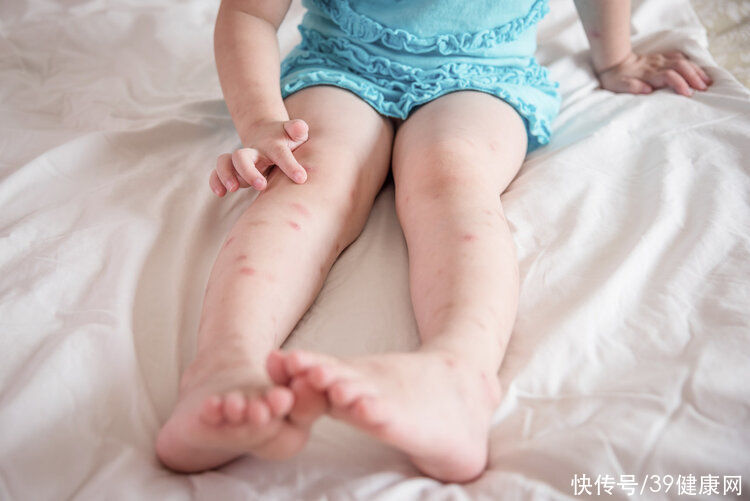The 65-year-old sister Zhang suffered a fire burn on the top of her head when she was a child. The wound took almost 4 months to heal, but there was always scarring baldness on the burn.
In January of this year, she found a “pimple” about the size of a soybean in the bald area. It was painful and itchy, and she couldn’t help scratching it. I accidentally scratched it to the point of bleeding and pus, and I just wiped it with alcohol.
4 months ago,this ‘pimple’ suddenly grew to the size of an egg, Sister Zhang was afraid that it was a tumor, so she went to the local tertiary hospital for treatment and performed a pathological biopsy of the head tumor. The result showed that it was well-differentiated squamous cell carcinoma of the skin.
Speaking of “squamous cell carcinoma”, many people may think that Mr. Zhao Zhongxiang died on January 16, 2020 because of squamous cell carcinoma. .
Squamous cell carcinoma may sound unfamiliar, but it is actually very common in real life.

I. What is “squamous cell carcinoma”? It may be more dangerous than you think
Squamous cell carcinoma, referred to as squamous cell carcinoma, is a malignant tumor that occurs in the epidermis or adnexal cells. It is more common in areas covered by squamous epithelium, such as skin, mouth, esophagus, cervix, vagina, etc..
This is actually a type of pathology, and it has no specific preventive measures. It is necessary to combine the primary site, pathological type, stage and other information to determine the specific treatment plan.
The incidence of squamous cell carcinoma and UV exposure, chemical stimulation, precancerous lesions, and other chronic skin diseases strong> and so on.
It usually occurs in the exposed parts such as the hands, back, and face of the 50-60-year-old elderly. The earliest manifestation is infiltrative hard spots, which can increase rapidly and have a cauliflower-like surface. Or the center ruptures to form an ulcer.
Currently, the more common squamous cell carcinomas in clinic are: skin squamous cell carcinoma, nasopharyngeal squamous cell carcinoma, esophageal squamous cell carcinoma, lung squamous cell carcinoma, and cervical squamous cell carcinoma.
Among them, squamous cell carcinoma of the skin has the highest cure rate, most of which are cured by surgery. Cure can be achieved, but the lungs and esophagus are found late due to their hidden locations, and the prognosis will also be affected.

Second, these three types of scars have a higher risk of cancer
According to Li Tao, Chief Physician of Bone and Soft Tissue Surgery, Cancer Hospital Affiliated to the University of Chinese Academy of Sciences, squamous cell carcinoma of the skin mostly occurs on the basis of old scars that have been burned in childhood. In addition, patients with chronic skin diseases are also prone to develop squamous cell carcinoma.
Why do old scars become cancerous?
Generally speaking, the scar will not be higher than the skin surface after the wound heals, it is a normal scar. However, if during the healing process, excessive cell proliferation occurs, causing the wound skin to thicken, red and swollen, and even deformity, it will form a pathological Scars or heterosexual scars.
On this basis, if the scar is repeatedly stimulated by scratching, inflammation, friction, etc., it is easy to form ulcers, which will gradually deteriorate if not healed for a long time. In particular, these three types of scars have a high risk of canceration, and everyone should be vigilant:
1. Hypertrophic scars
These scars are irregular in shape, uneven in surface and firm in texture, often accompanied by unbearable itching, which causes the patient to scratch repeatedly, resulting in infection.

2. Recurrent infected keloids strong>
This kind of scar has obvious skin lesions, and it may also be caused by acne or mosquito bites, and it is easy to be repeatedly irritated.
3. Severe post-burn atrophic scars
These scars have thinner epidermis , and the surface is flat and bright white due to poor blood circulation. If the scar is in the joint activity, it is easy to cause repeated rupture and infection.
Third, what can we do to prevent “squamous cell carcinoma”?
Many people may not have heard of squamous cell carcinoma, but its incidence is increasing every year. The occurrence of squamous cell carcinoma is directly related to the lifestyle, so what incentives should we pay attention to in daily life, and how to prevent it?
- Eat less hot food
Published in Nature A study in the sub-journal found that people who love to eat and drink “hot mouth” increase the risk of esophageal squamous cell carcinoma by nearly 4 times. The human body’s esophagus has a limited heat resistance. Freshly boiled soup and hot tea are too hot to burn the esophagus. You might as well wait for it to cool before drinking.

- Use sunscreen
The long-term exposure of the skin to sunlight can easily cause chronic irritation and may also induce skin squamous cell carcinoma. It is very important to use sunscreen every day when you go out. Internationally, there is an ABC principle of sun protection:
Avoid the sun: try to stay indoors, or try to walk in the shade place, avoid direct exposure to sunlight.
Blocking:Wear sunglasses, sun protection clothing, and umbrellas when going out.
Sunscreen: Sunscreen is a supplement to A and B to help strengthen the sunscreen effect.
- Use chopsticks
Epstein-Barr virus is ubiquitous For the herpes virus all over the world, it can be latent in B lymphocytes for a long time. When the body’s immune function is low, it will cause infection and eventually cause nasopharyngeal cancer or other diseases.
EB virus can be transmitted through saliva, so the key to prevention is to pay attention to oral hygiene, including using public chopsticks as much as possible during dinner parties.

- HPV vaccine
Many squamous cell carcinomas are associated with HPV infection, such as cervical cancer and oropharyngeal cancer. Vaccination with HPV virus can effectively prevent virus invasion and greatly reduce the risk of cancer.
- Smoke less
Smoking, air pollution, etc. , will stimulate the lungs, can cause the occurrence of lung squamous cell carcinoma.
Research published in the Journal of the National Cancer Institute shows that 5 years of quitting smoking reduces lung cancer risk by 39% . Therefore, Xiao Jiu still has to say something long: Please quit smoking!
The key to the prevention and treatment of squamous cell carcinoma is to have early screening, early detection and early treatment, and the other is to develop a good lifestyle. I hope that through this article, everyone can understand this “unpopular cancer” more clearly.

References:
[1] “Squamous Cells” How dangerous is cancer? Xinhua News Agency. 2020-01-17
[2] “Dangerous! These three kinds of scars on the body can be treated quickly, or they can become cancer! Don’t be careless…”. Popular Science China .2021-06-21
[3] “@Smoking, quit smoking quickly, even if you are diagnosed with lung cancer, you can reduce the risk of death! | ASCO2020”. Medical Cancer Friends Association. 2020-05-15
Reprinting is prohibited without the author’s permission